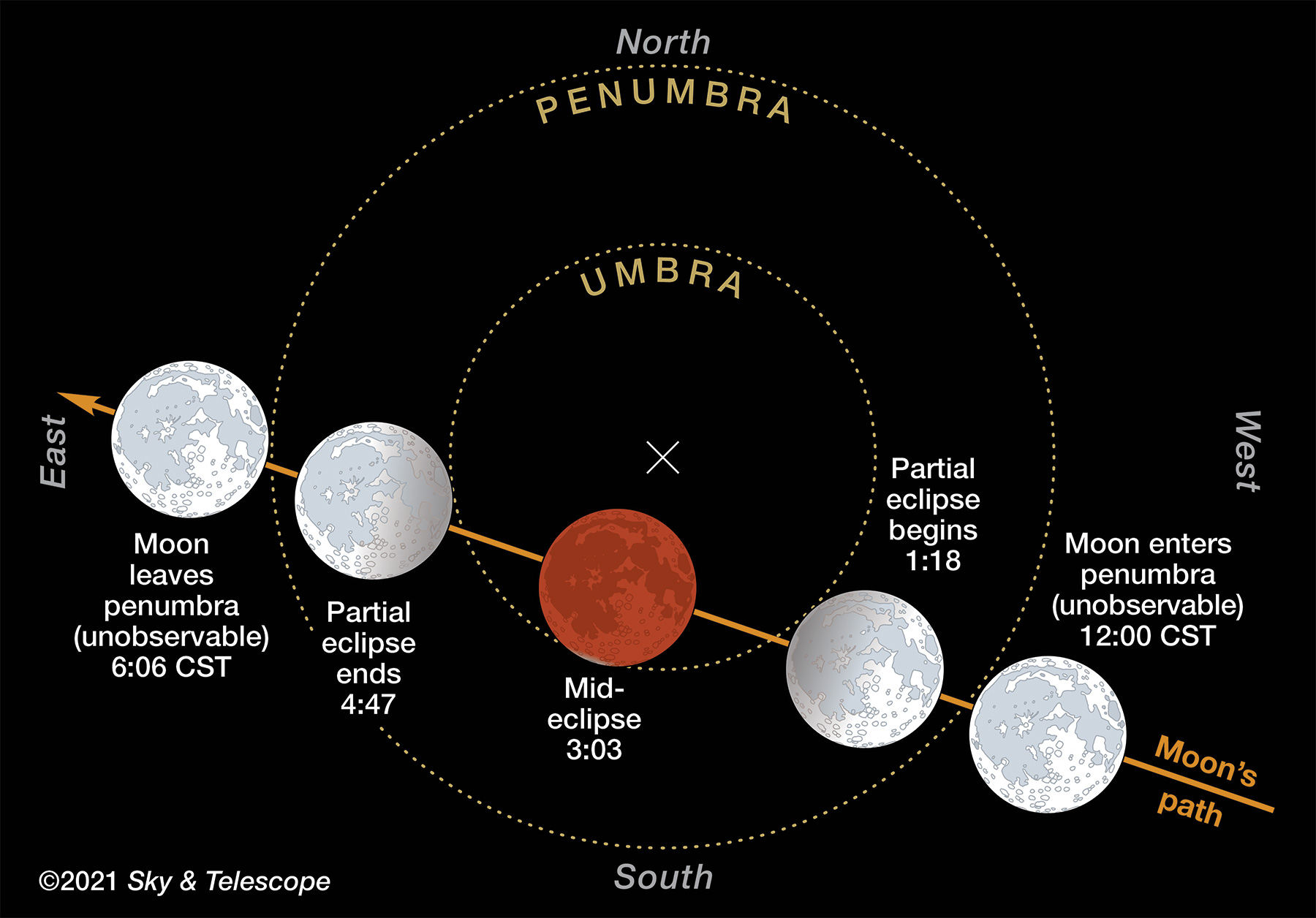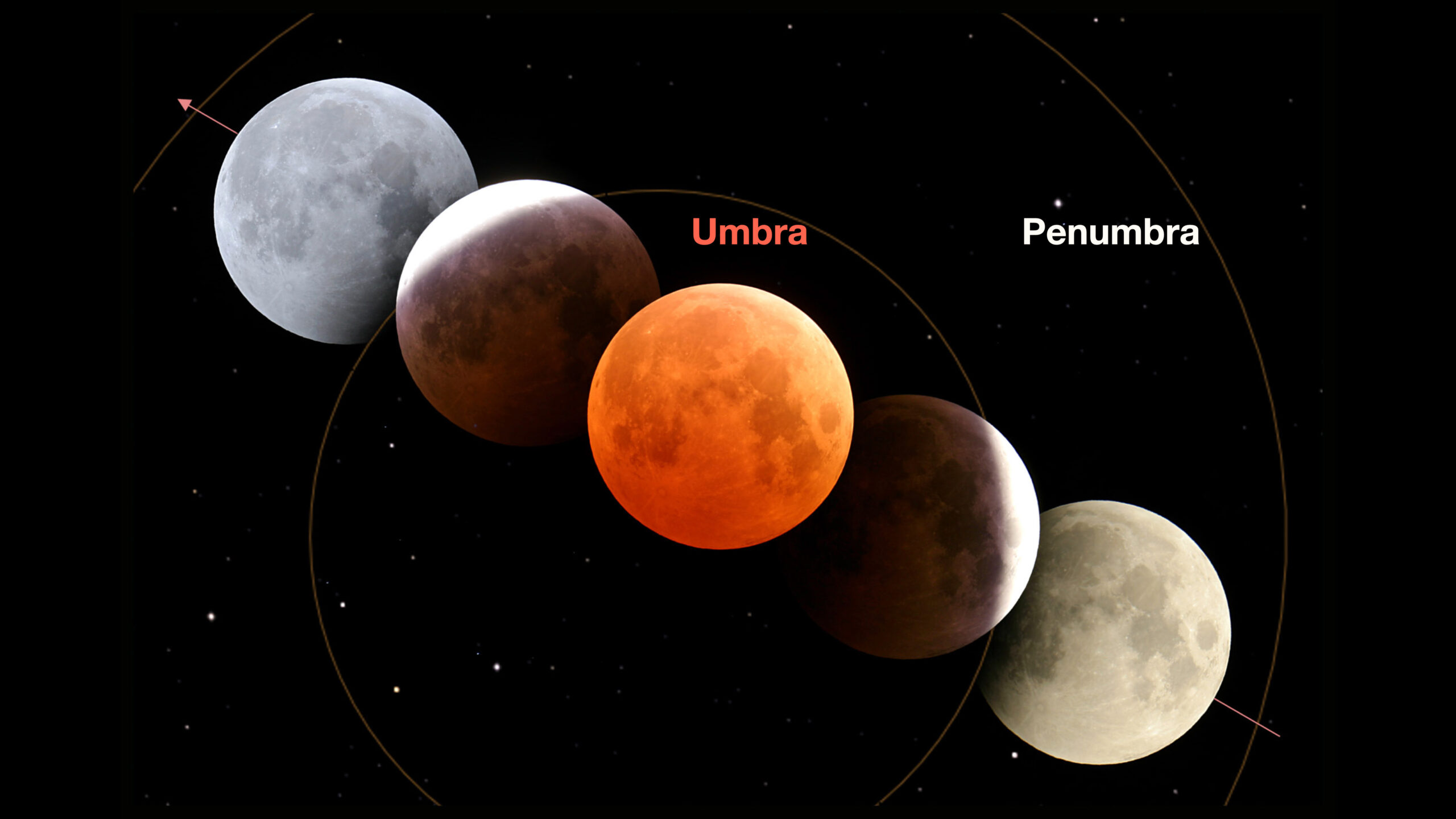The moon is one of the most fascinating objects in our night sky. Its ethereal beauty has captured the imaginations of people for centuries. If the moon were to expand to twice its current diameter, we would have total solar eclipses.
The moon’s diameter is currently about 2,159 miles. An increase to 4,318 miles would cause the moon to completely block out the sun, resulting in a total eclipse. While this may seem like a far-fetched scenario, it’s not outside the realm of possibility.
In fact, if the moon were to keep expanding at its current rate, it would reach this size in about 1.4 billion years.
If the moon were to expand to twice its current diameter, we would have total solar eclipses. This would mean that the moon would completely block out the sun, and we would be in complete darkness. This would be an amazing event to witness, but it would also be incredibly dangerous.
Without the sun, we would not be able to see, and we would not be able to survive.

Credit: skyandtelescope.org
How Many Degrees Per Day Does the Sky Turn?
As the Earth rotates on its axis, the sky appears to turn. This is because we are seeing different parts of the sky as the Earth turns. The sky turns 360 degrees in 24 hours.
This means that it turns 15 degrees in one hour, or 1 degree every 4 minutes.
What is Your Latitude If You Observe Polaris 47.5 above the Horizon?
Assuming you are in the Northern Hemisphere, your latitude would be approximately 47.5 degrees North if you observed Polaris (the North Star) directly above the horizon. To be more precise, your latitude would be equal to the angle formed between the horizon and the North Star, with the North Star being at the apex of the angle. The angle itself would be approximately 47.5 degrees, give or take a few degrees depending on your exact location.
To find your latitude using the North Star, you would first need to find the North Star in the night sky. Polaris is the North Star, and it is located in the constellation Ursa Minor (the Little Bear). Ursa Minor is a small constellation that is located close to the North Celestial Pole, making Polaris appear to be stationary in the night sky while all the other stars appear to rotate around it.
Once you have located Ursa Minor, finding Polaris within the constellation is relatively easy since it is the brightest star in Ursa Minor and is located at the end of the constellation’s “handle.”
Once you have found Polaris, simply extend an imaginary line from the star through the horizon. The angle formed between this line and the horizon is your latitude.
For example, if Polaris is directly above the horizon, then your latitude would be 90 degrees (a perfect circle). If Polaris is directly to the left of the horizon, then your latitude would be 0 degrees (the North Pole). And if Polaris is directly to the right of the horizon, then your latitude would be 180 degrees (the South Pole).
In general, the closer Polaris is to the horizon, the higher your latitude will be.
So, to recap, if you observe Polaris directly above the horizon, then your latitude is approximately 47.5 degrees North. This method of finding latitude is not perfect, but it is one of the most simple and accurate ways to do it without any specialized equipment.
What Causes the Seasons Quizlet?
The seasons are caused by the Earth’s tilt on its axis. As the Earth orbits the sun, different parts of the planet are exposed to more or less direct sunlight. This difference in exposure creates the seasons.
In the northern hemisphere, the winter season is caused by the Earth’s tilt away from the sun. This means that the sun’s rays hit the Earth at a lower angle, and the days are shorter. The days are also colder because the sun’s rays don’t have as much time to warm up the Earth’s surface.
In the summer, the Earth’s tilt is towards the sun. This means that the sun’s rays hit the Earth at a higher angle, and the days are longer. The days are also warmer because the sun’s rays have more time to warm up the Earth’s surface.
The seasons are also caused by the Earth’s orbit around the sun. The Earth’s orbit is not perfectly circular, so it is actually closer to the sun during part of the year and further away during another part. This difference in distance from the sun also affects the seasons.
When the Earth is closer to the sun, the northern hemisphere is exposed to more direct sunlight. This makes the days longer and the winters shorter.
When the Earth is further from the sun, the northern hemisphere is exposed to less direct sunlight.
This makes the days shorter and the winters longer.
What is Retrograde Motion of the Planets Quizlet?
In astronomy, retrograde motion is the movement of a planet in a direction opposite to the rotation of the Solar System. The planets in our Solar System generally orbit the Sun in the same direction that the Sun rotates. However, sometimes a planet will appear to move backwards in its orbit.
This is called retrograde motion.
Retrograde motion occurs because the Earth is orbiting the Sun faster than the planet in question. As the Earth overtakes the slower planet, it appears to move backwards in its orbit.
Retrograde motion is an illusion, however, and the planet is actually still orbiting the Sun in the same direction as always.
The planets that experience retrograde motion are Mercury, Venus, Mars, Jupiter, Saturn, Uranus, Neptune, and Pluto. Retrograde motion can be observed with the naked eye, but it is more easily seen through a telescope.
If you want to see retrograde motion for yourself, the best time to observe it is during the evening hours in the spring. This is because the planets that experience retrograde motion are closer to the Sun than Earth is, so they are only visible in the evening sky.
To find a planet in retrograde motion, look for the planet in the sky and then trace its path backwards.
The planet will appear to move from west to east, while the stars in the background appear to move from east to west.
Total Solar Eclipses in the Solar System by Dr Rod Hill
In the Northern Hemisphere, Summertime is Warmer Than Wintertime Because
. .
As we head into summer in the Northern Hemisphere, many of us are looking forward to warmer weather. But why is it that summertime is generally warmer than wintertime?
There are actually a few reasons for this!
One reason has to do with the tilt of the Earth’s axis. During the summer months, the Northern Hemisphere is tilted more towards the sun.
This means that the sun’s rays hit us more directly, making it warmer.
Another reason is that the Earth’s orbit around the sun is not perfectly circular. It’s actually a bit more elliptical.
This means that the Earth is actually closer to the sun during the summer months than the winter months. And since heat travels from hot to cold, this makes the summer months warmer.
So there you have it!
A few of the reasons why summertime is warmer than wintertime in the Northern Hemisphere. Enjoy the heat!
You Notice That There is a Full Moon at Midnight, About How Long Will It Be Until There is New Moon?
According to lunar cycles, a new moon occurs when the moon is directly between the earth and the sun. This alignment causes the moon to be illuminated on the side facing away from the earth, making it appear invisible to us. A full moon, on the other hand, occurs when the moon is directly opposite the sun in the sky and is therefore fully illuminated.
So, if you notice a full moon at midnight, the new moon will occur approximately 14 days later.
If the Earth’S Rotational Direction were Reversed, We Would See
We all take the rotation of the Earth for granted. It’s what makes the Sun rise in the morning and set at night. It’s what gives us day and night.
But what if the Earth’s rotational direction were reversed? What would we see?
First, let’s review how the Earth rotates.
The Earth’s axis is an imaginary line that goes through the North and South Poles. The Earth rotates around this axis once every 24 hours. This rotation is what makes the Sun appear to rise in the east and set in the west.
If the Earth’s rotational direction were reversed, the Sun would still rise in the east and set in the west. But the Sun would rise in the west and set in the east. This would be because the Earth would be rotating in the opposite direction.
The reversal of the Earth’s rotation would have some other interesting effects. For example, the seasons would be reversed. Instead of winter being in December, January, and February, winter would be in June, July, and August.
And instead of summer being in June, July, and August, summer would be in December, January, and February.
Of course, the reversal of the Earth’s rotation would have some more dramatic effects as well. For example, the oceans would move in the opposite direction.
This would cause some interesting weather patterns. And because the Earth’s rotation affects the way the wind blows, the wind would also blow in the opposite direction.
All in all, the reversal of the Earth’s rotational direction would be a very strange and interesting event. It would be something that we would have to adjust to. But it would definitely be something to see!
If You See a Full Moon at Midnight, About How Long Will It Be Until There is a New Moon?
When it comes to full moons, the timing of when they occur can vary slightly from one month to the next. However, if you see a full moon at midnight, you can generally expect that there will be a new moon within 2-3 weeks.
During this time, the moon will gradually wax and wane, moving from its full state back to a new moon.
The cycle of the moon is an important part of many cultures and religions, and has been used to track time for centuries.
So, if you find yourself up at midnight staring at a full moon, just know that a new moon is on the horizon. And, in the meantime, enjoy the beauty of the night sky!
Conclusion
If the Moon were to expand to twice its current diameter, we would have total solar eclipses every month. The Moon’s expansion would cause the Earth’s orbit to become elliptical, and the Earth would experience longer days and shorter nights. The Moon’s gravitational pull would also increase, causing the tides to become more extreme.
